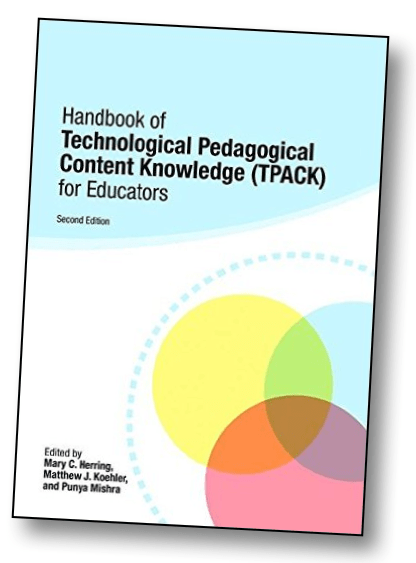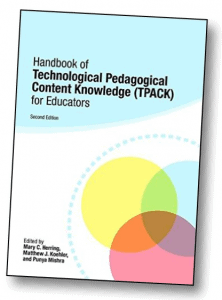The TPACK framework, as we know it today, was first introduced to the world in 2006 in an article in TCRecord (Mishra & Koehler, 2006). An important part of the story of the success of the framework was the publication of The handbook of technological pedagogical content knowledge (TPCK) for educators by AACTE and Routledge. Matt and I wrote an introductory chapter for that (see Koehler & Mishra, 2008).
Over the past decade the amount of research into TPACK has grown exponentially… and so it was time for the 2nd edition of the handbook (citation and more information below).
Herring, M., Koehler, M.J., & Mishra, P. (Eds.) (2016). Handbook of technological pedagogical content knowledge (2nd edition). New York: Routledge.
Mary Herring and Matt Koehler deserve a lot of the credit for getting this book out the door. Josh Rosenberg and Jolene Teske put in untold hours into this as well. As editors we wrote the introductory chapter (citation and link to pdf of pre-publication version below):
Herring, M. C., Koehler, M. J., Mishra, P., Rosenberg, J. M., & Teske, J. (2016). Introduction to the Second Edition of the TPACK Handbook. In M.C. Herring, M.J. Koehler, and P. Mishra (Eds.), Handbook of Technological Pedagogical Content Knowledge (TPACK) for Educators (2nd Edition, pp. 1-8). New York: Routledge.
We conclude the introduction by writing the following:
The growth and richness of TPACK research over the past decade makes it difficult if not impossible to capture it completely in this handbook. What we have attempted is to combine broader reviews of the literature and field with specific studies and research papers. This way, we believe, we could at least offer a sampling of the work that is currently underway. The diversity of approaches in this handbook means that different readers may use the handbook in different ways. Those who are new to TPACK may focus on the first section (on theory). Researchers designing studies or looking to compare their work to related scholarship may consult the second section (on research). Finally, those looking to directly apply TPACK to their work as professional development providers, administrators, or teacher educators may find the third section (applications to practice) most helpful. We hope that, as a whole, this handbook provides the reader with a broad overview of TPACK with specific insights into the theory, research, and application of the framework across multiple contexts.




Su trabajo es formidable. Sería muy grato contar con su “El manual de conocimiento de contenidos pedagógicos tecnológicos (TPCK) para educadores por AACTE y Routledge. Matt y Ud.” en español. Le saludo muy atte. Viviana Benítez. Profesora de informática en Argentina
Translated by Google Translate (by Punya):
Their work is formidable. It would be very gratifying to have his “The manual of knowledge of pedagogical technological contents (TPCK) for educators by AACTE and Routledge. Matt and you “in Spanish. I greet you very closely. Viviana Benítez. Computer teacher in Argentina